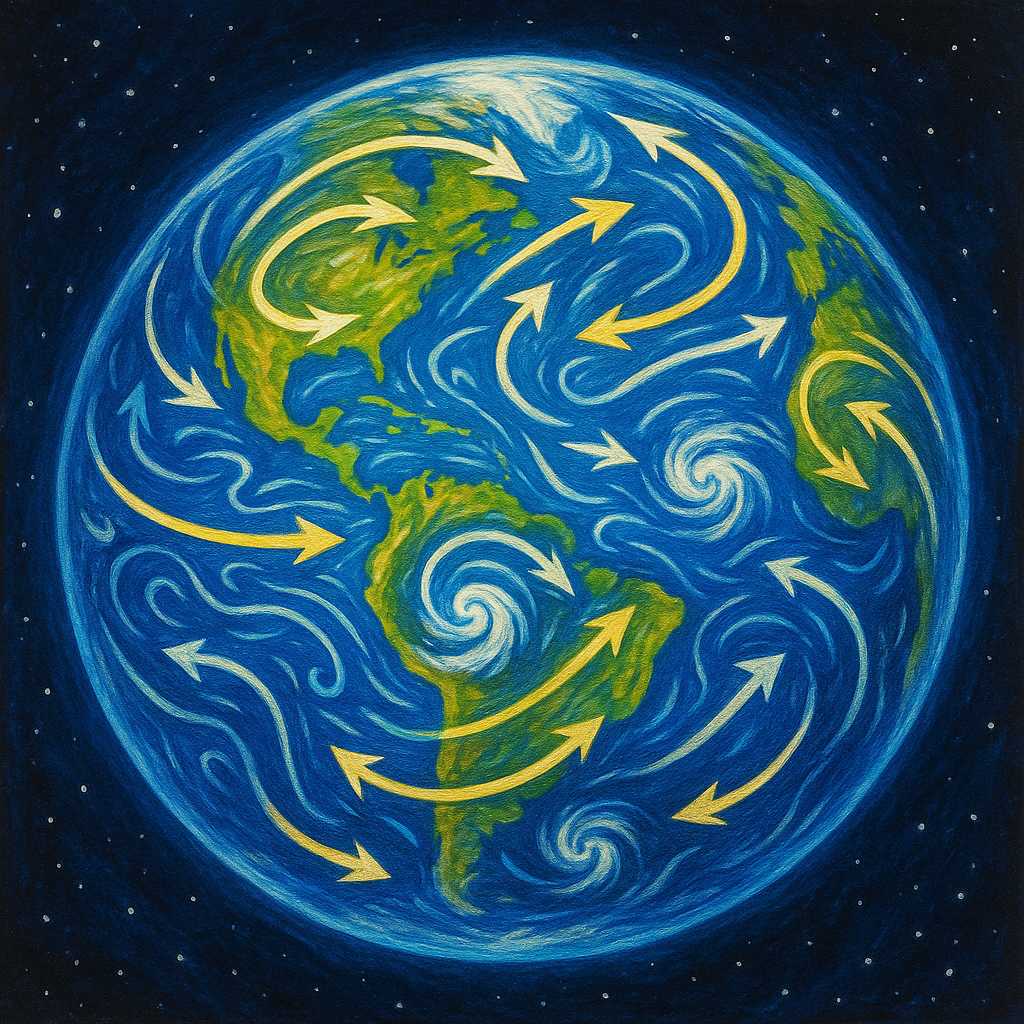Have you ever wondered why hurricanes spin counterclockwise in the Northern Hemisphere and clockwise in the Southern Hemisphere? Or why prevailing winds follow curved paths rather than going straight from high to low pressure? The answer lies in a fascinating phenomenon called the Coriolis Effect—a force that shapes much of the planet’s large-scale weather and ocean movements.
Understanding the Coriolis Effect
The Coriolis Effect isn’t a force in the conventional sense, but rather a result of Earth’s rotation. As our planet spins on its axis, anything moving freely above its surface—like air or water—appears to curve relative to the ground. This apparent deflection is strongest at the poles and nonexistent at the equator.
Let’s break it down: Imagine launching a ball straight north from the equator. While the ball travels, Earth rotates eastward beneath it. The equator moves faster than points further north, which means the ball retains that faster eastward momentum, causing it to appear to veer east as it moves north. This same principle governs air masses in our atmosphere.
Impacts on Weather and Ocean Currents
In the Northern Hemisphere, the Coriolis Effect causes moving air to deflect to the right; in the Southern Hemisphere, it deflects to the left. This deflection influences global wind patterns: it’s why trade winds, westerlies, and polar easterlies follow their distinctive paths. More dramatically, it’s also why cyclones spin counterclockwise north of the equator and clockwise to the south.
A similar effect steers major ocean currents, creating gyres—vast, swirling systems that play a key role in distributing heat around the globe. Without the Coriolis Effect, the world’s weather—and its climate—would look drastically different.
Bringing Theory to Everyday Life
Next time you see a weather map filled with swirling arrows or track a storm system spinning across the Atlantic, remember that it’s not just temperature and pressure shaping these patterns. The fundamental mechanics of our spinning planet are at play, quietly orchestrating the grand, interconnected dance of the atmosphere.
— Rabir


Leave a Reply